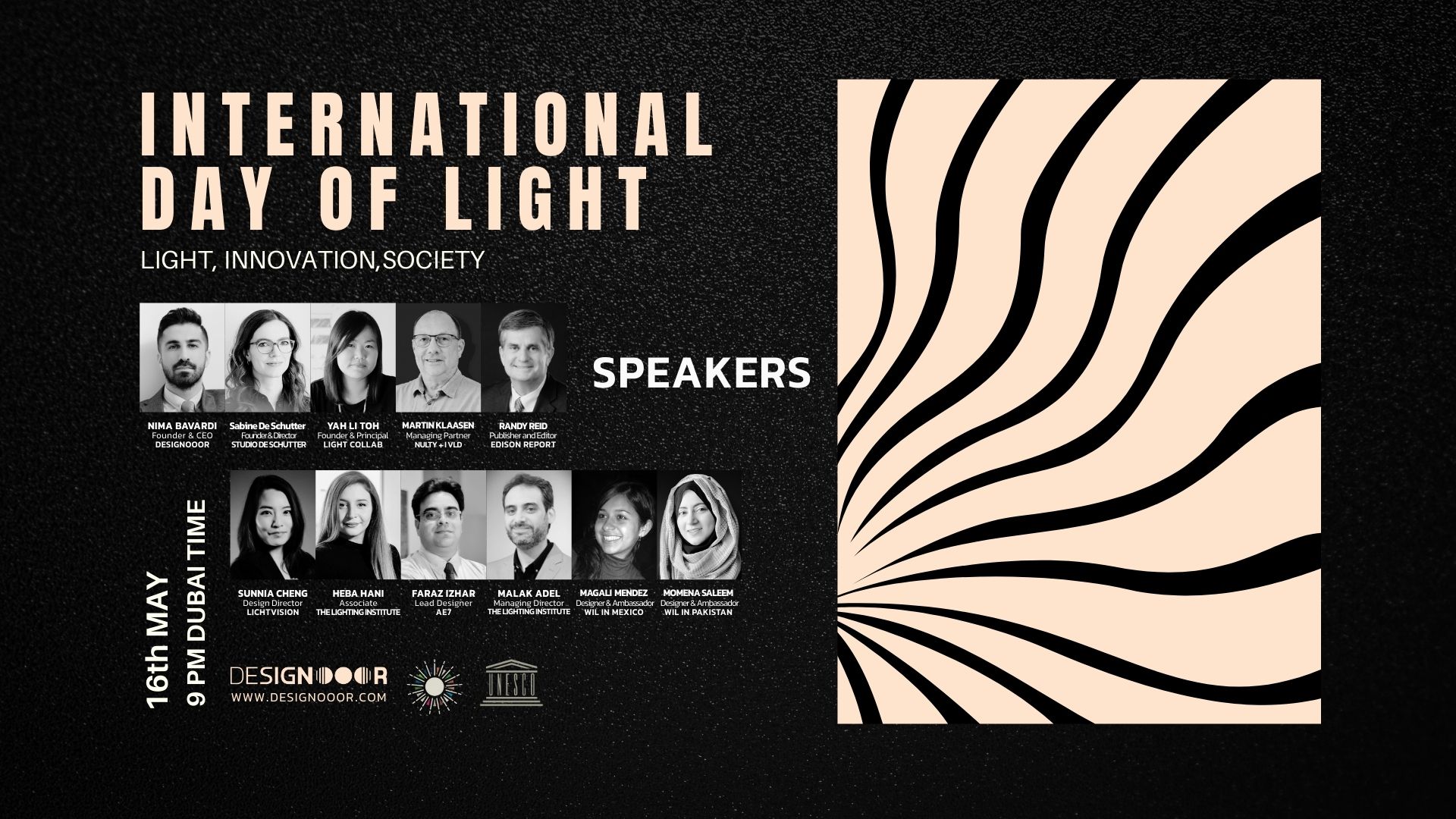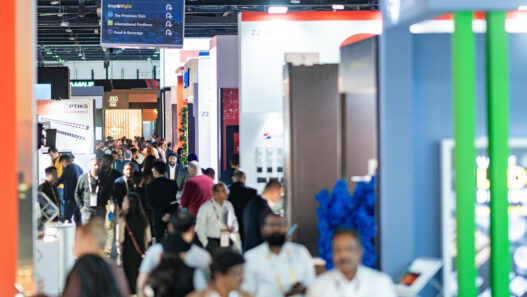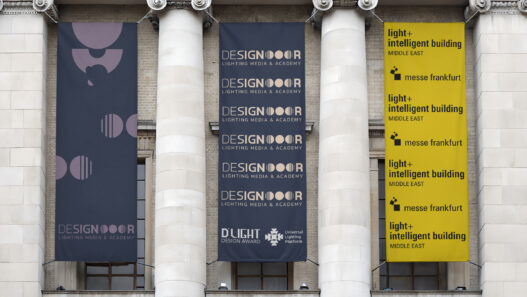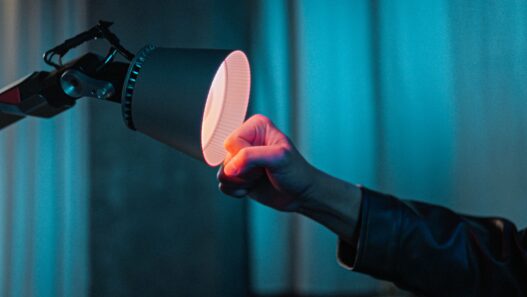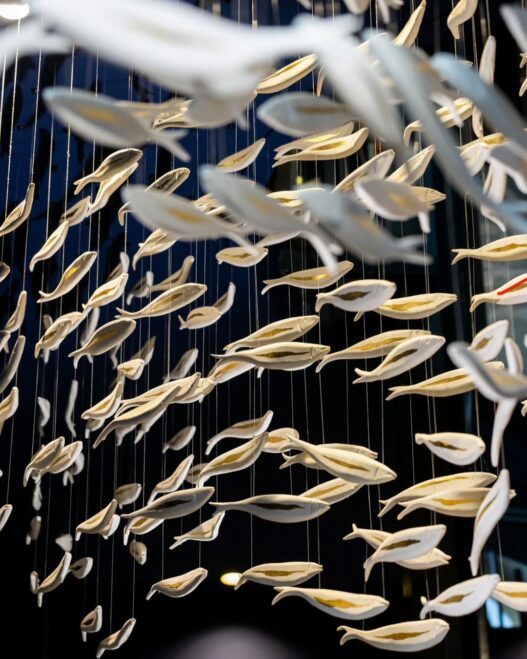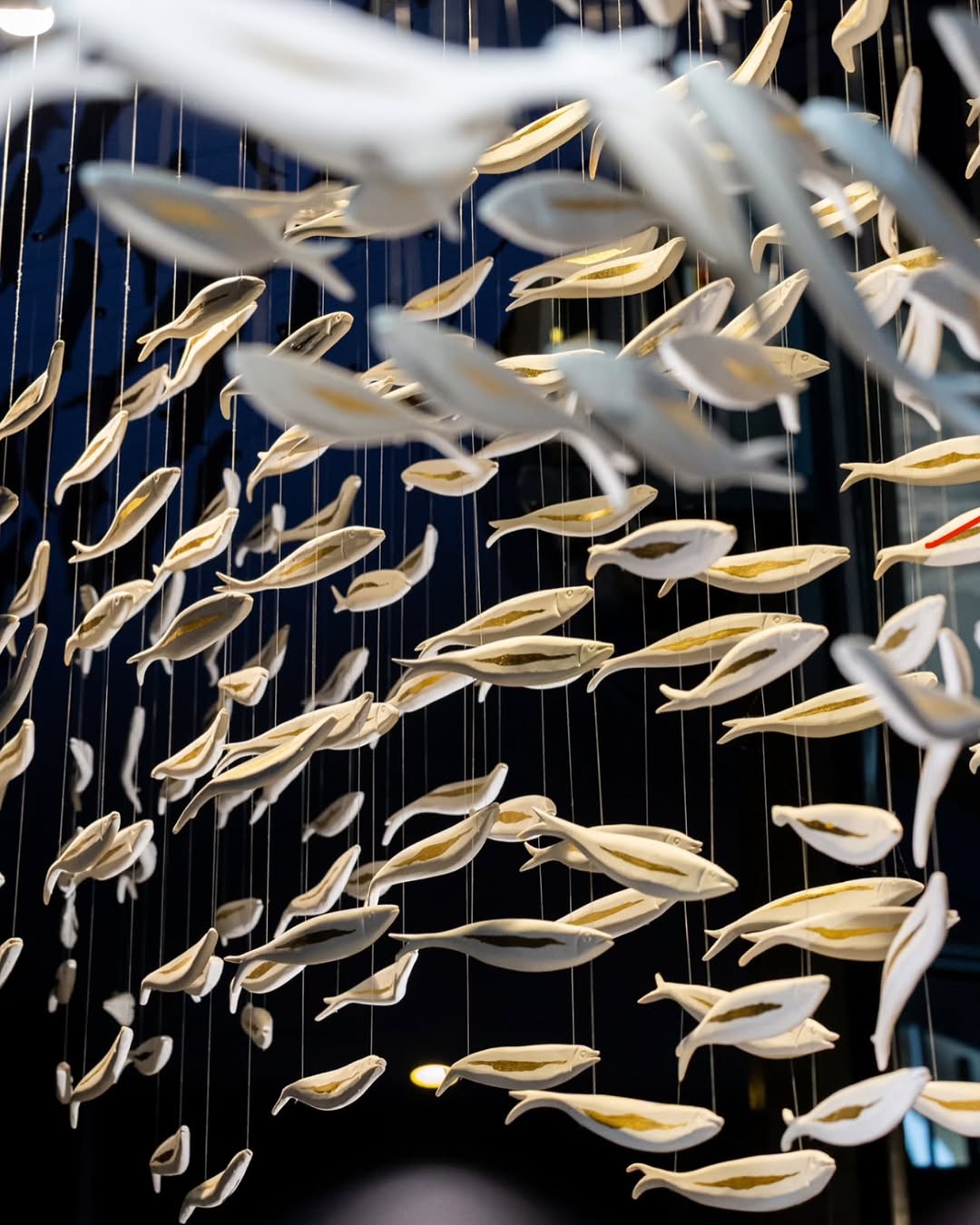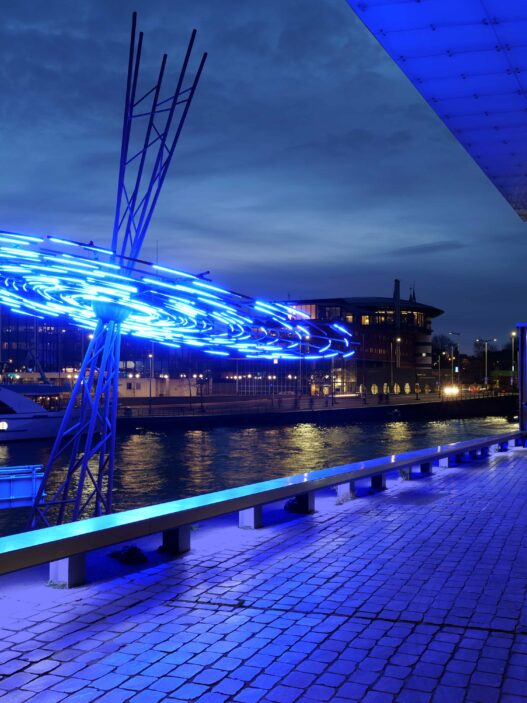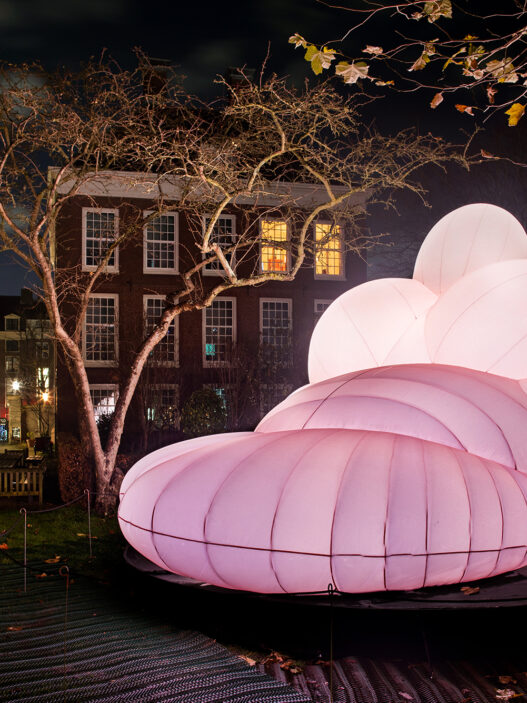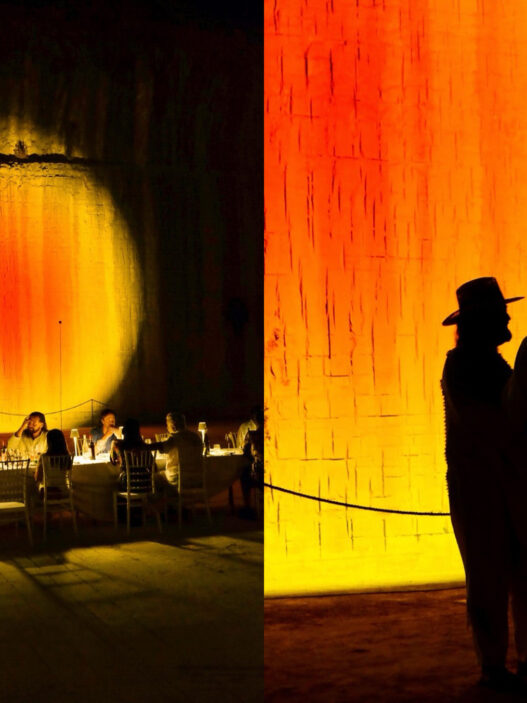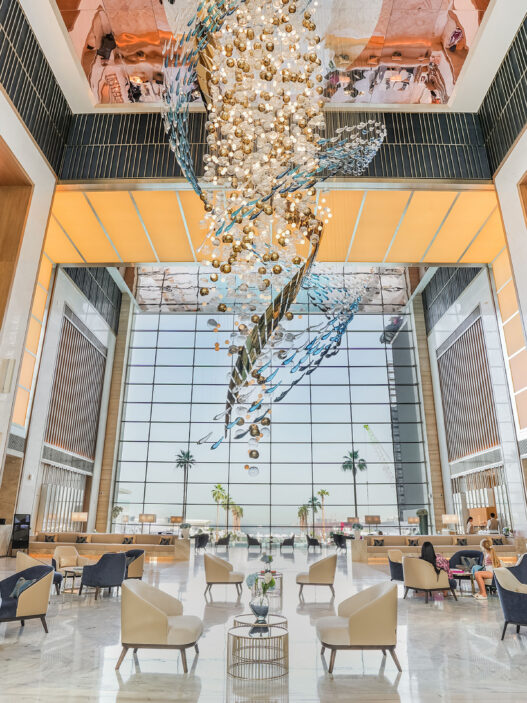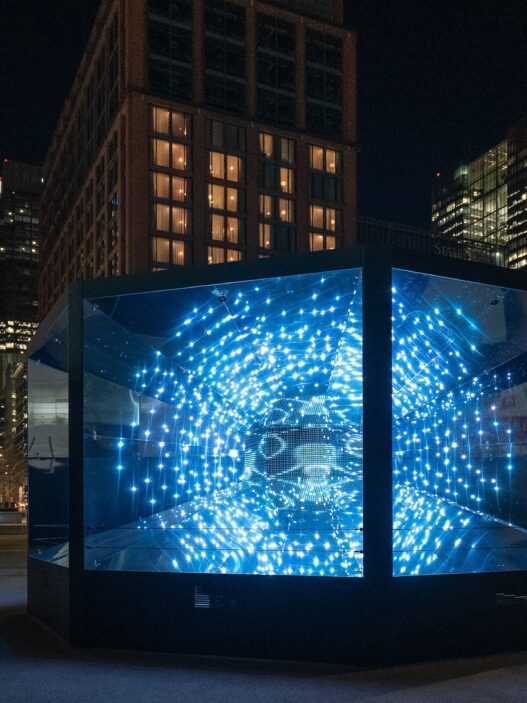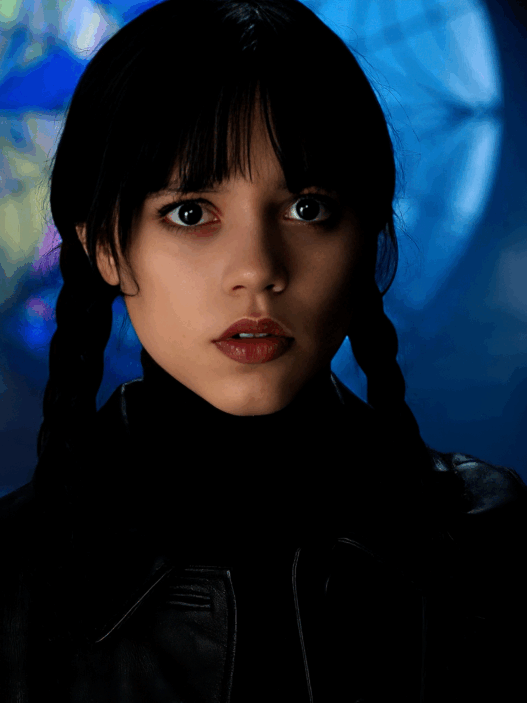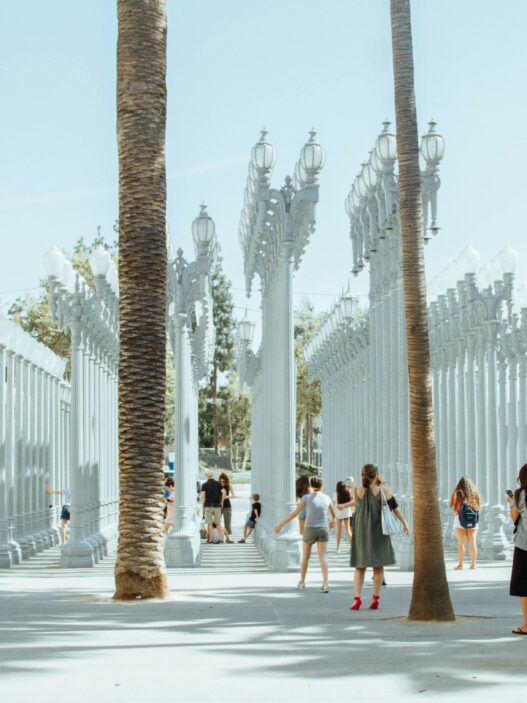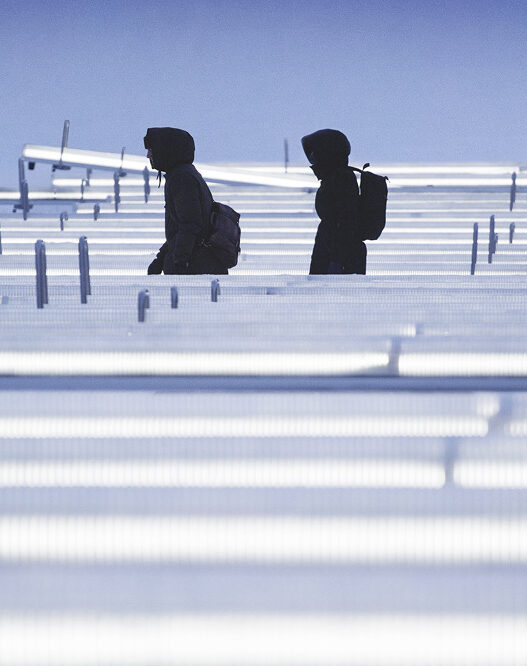In Les Sardines, we are faced with a collection composed of repeated suspended ceramic elements at various heights. The forms are similar, but slight differences in curvature, angle, or size can be seen. The overall structure is visually built on a relative balance between density and spacing. The interaction of light with the ceramic in this piece is notable; the outer surface of the forms, made of unglazed ceramic, does not produce direct reflection but diffuses and softly bounces the light. This type of response to light results in low-contrast, layered shadows around the piece. The inner side of some forms is coated in gold, which creates a subtle shimmer under ambient light without producing harsh glare.
Functionally, this piece is not defined as a light source. Its role lies more in altering the quality of the surrounding light than generating it. In controlled or focused lighting conditions, the ceramics can cast dense and varying shadows that shift with the viewer’s movement or changes in the angle of illumination. This characteristic turns the work into a temporary spatial experience that varies depending on ambient light and placement. Although the responsiveness is not extensive, it gives the piece a dynamic quality that fits the space.
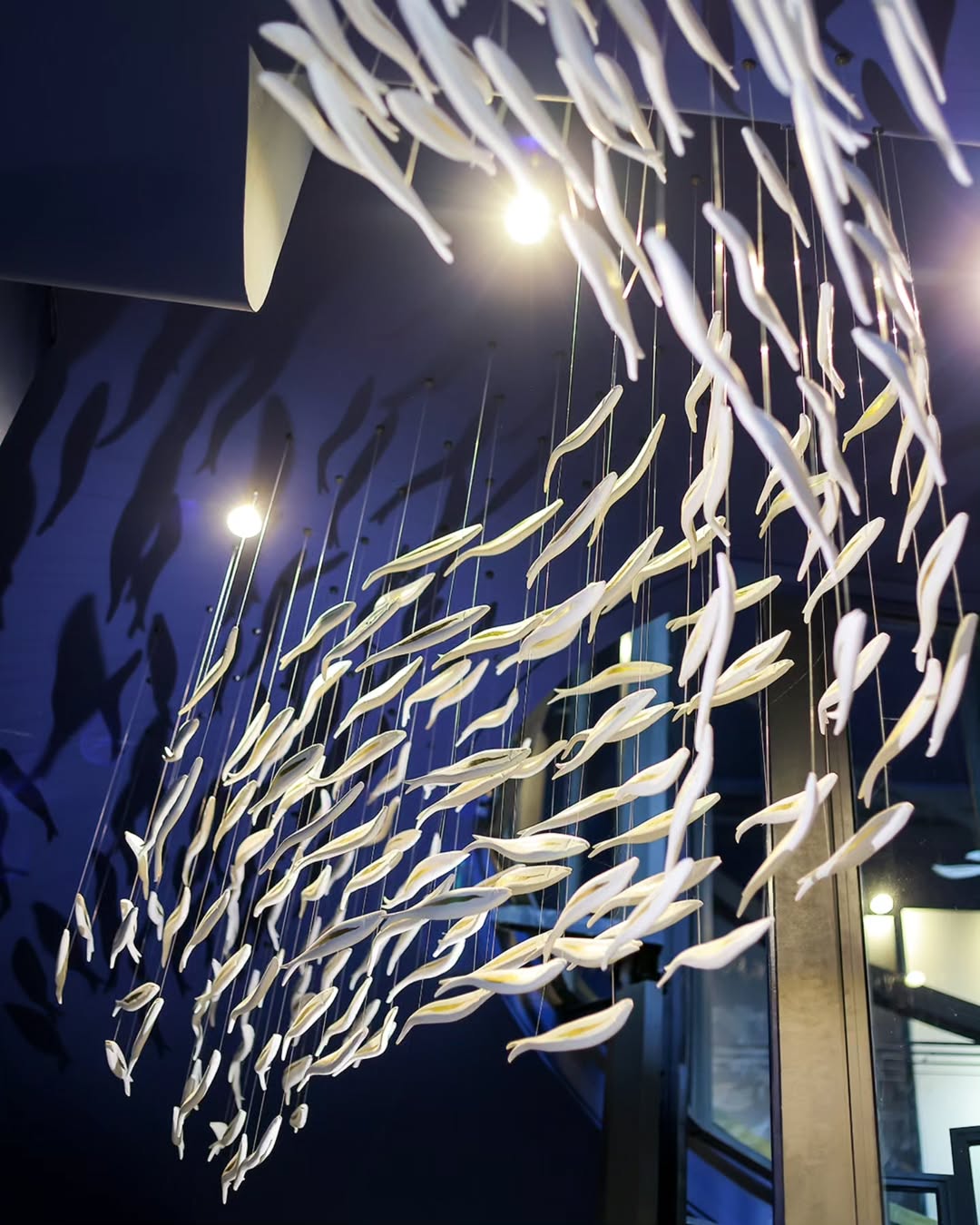
Structurally, the arrangement of the elements is configured to maintain relative stability. The suspension threads are not visible, which contributes to visual cleanliness, though in high-traffic areas or places with airflow, the overall stability should be more carefully evaluated. The use of ceramic as the main material, apart from its aesthetic properties, is a choice with strong potential. Ceramic absorbs light, diffuses it, and with changes in light intensity, its texture becomes noticeably visible. This material response to light is the most important feature of the piece, which instead of adding a light source, makes use of natural reflection.
In sum, Les Sardines is not a direct lighting installation, but its response to light and material is designed at an acceptable level. In this piece, ceramic does not function as a passive decorative object, but as an active surface in relation to light. The repeated forms, combined with color and texture, can be effectively defined in spaces with ambient light. This design does not seek to provide illumination or convey an explicit narrative; its goal is to create a visual situation that is not static, yet not overstated either. The piece remains dependent on the space and surrounding light, but within this dependency, it offers measured responses that can be considered part of a deliberate design.
Designer: Julien Truchon
